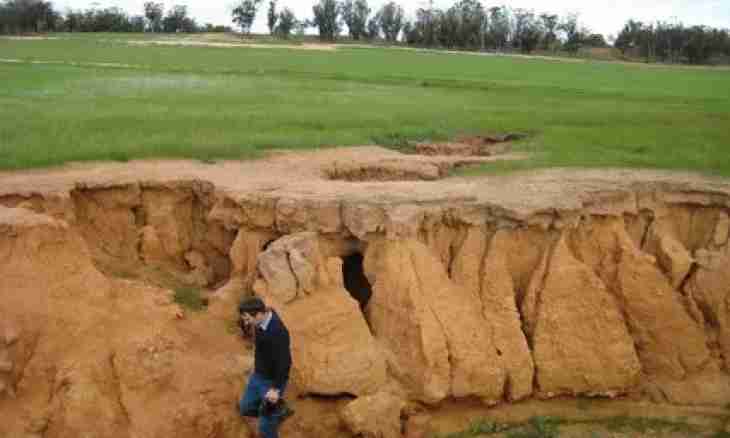Soil erosion is a destruction of an earth cover as a result of actions of external factors. The erosion is normal when the speed of destruction is less than the speed of formation of a new soil layer, and progressing. Also the erosion is natural and anthropogenic.
The anthropogenic erosion is a consequence of mass use in agriculture lands which were not previously protected from destruction of a soil layer. Usually natural erosion proceeds with a normal speed, but not always, then speak about the progressing destruction of a fertile layer.
Distinguish two types of soil erosion: wind and water. The wind erosion is a destruction owing to wind influence. The wind erosion is divided into daily and into dust storms. To start a dust storm it is necessary that wind had rather high initial speed, however owing to chain reaction of the come-off soil particles the storm continues also at smaller speeds of wind.
The water erosion happens several types: - drop, - superficial, - linear, - struychaty. The drop erosion is a destruction of a soil layer under the influence of kinetic energy of the falling rain drops. On gentle slopes of a part of the soil can be rejected rather far. This type of an erosion is most characteristic of tropical regions with rainy climate. The superficial or plane erosion is a destruction of a soil layer small superficial streams which cause washout of the soil in the horizontal plane. Sometimes this form of an erosion is taken for destruction by continuously moving water layer. Such erosion leads to formation of the washed-away and dirty soils. The linear erosion is a consequence of washout of the soil water flows. At the beginning it is formed gullies up to 1 meter in depth, then formation of various negative (concave) elements of a relief is possible. The linear erosion is deep and side. The deep erosion is a stream bottom cause of destruction, and side leads to degradation of coast.

